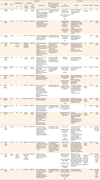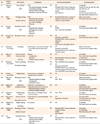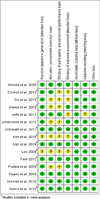1. International Agency for Research on Cancer. Latest global cancer data: cancer burden rises to 18.1 million new cases and 9.6 million cancer deaths in 2018 [Internet]. Lyon: International Agency for Research on Cancer;2018. cited 2019 August 18. Available from:
https://www.iarc.fr/wp-content/uploads/2018/09/pr263_E.pdf.
2. Korean Breast Cancer Society. Breast cancer facts & figures 2018 [Internet]. Seoul: Korean Breast Cancer Society;2018. cited 2019 May 31. Available from:
http://www.kbcs.or.kr/sub02/sub04.html.
3. Lee SK, Choi JH, Lim HI, Kim WW, Kim S, Choe J-H, et al. Arm sentinel lymph node detection for preserving the arm lymphatic system. Journal of Breast Cancer. 2009; 12(4):272–277. DOI:
10.4048/jbc.2009.12.4.272.

4. Rockson SG. Lymphedema after breast cancer treatment. The New England Journal of Medicine. 2018; 379(20):1937–1944. DOI:
10.1056/NEJMcp1803290.

5. International Society of Lymphology. The diagnosis and treatment of peripheral lymphedema. 2009 Concensus Document of the International Society of Lymphology. Lymphology. 2009; 42(2):51–60.
6. Wanchai A, Armer JM, Stewart BR, Lasinski BB. Breast cancer-related lymphedema: a literature review for clinical practice. International Journal of Nursing Sciences. 2016; 3(2):202–207. DOI:
10.1016/j.ijnss.2016.04.006.

7. Stuiver MM, ten Tusscher MR, Agasi-Idenburg CS, Lucas C, Aaronson NK, Bossuyt PMM. Conservative interventions for preventing clinically detectable upper-limb lymphoedema in patients who are at risk of developing lymphoedema after breast cancer therapy. The Cochrane database of systematic reviews. 2015; 13(2):CD009765. DOI:
10.1002/14651858.CD009765.pub2.

8. DiSipio T, Rye S, Newman B, Hayes S. Incidence of unilateral arm lymphoedema after breast cancer: a systematic review and meta-analysis. The Lancet Oncology. 2013; 14(6):500–515. DOI:
10.1016/S1470-2045(13)70076-7.

9. Taghian NR, Miller CL, Jammallo LS, O'Toole J, Skolny MN. Lymphedema following breast cancer treatment and impact on quality of life: a review. Critical Reviews in Oncology/Hematology. 2014; 92(3):227–234. DOI:
10.1016/j.critrevonc.2014.06.004.

10. McLaughlin SA, Wright MJ, Morris KT, Giron GL, Sampson MR, Brockway JP, et al. Prevalence of lymphedema in women with breast cancer 5 years after sentinel lymph node biopsy or axillary dissection: objective measurements. Journal of Clinical Oncology. 2008; 26(32):5213–5219. DOI:
10.1200/JCO.2008.16.3725.

11. Lee SH, Min YS, Park HY, Jung TD. Health-related quality of life in breast cancer patients with lymphedema who survived more than one year after surgery. Journal of Breast Cancer. 2012; 15(4):449–453. DOI:
10.4048/jbc.2012.15.4.449.

12. Kilbreath SL, Refshauge KM, Beith JM, Ward LC, Ung OA, Dylke ES, et al. Risk factors for lymphoedema in women with breast cancer: a large prospective cohort. The Breast. 2016; 28:29–36. DOI:
10.1016/j.breast.2016.04.011.

13. Vassard D, Olsen MH, Zinckernagel L, Vibe-Petersen J, Dalton SO, Johansen C. Psychological consequences of lymphoedema associated with breast cancer: a prospective cohort study. European Journal of Cancer. 2010; 46(18):3211–3218. DOI:
10.1016/j.ejca.2010.07.041.

14. Smoot B, Wong J, Cooper B, Wanek L, Topp K, Byl N, et al. Upper extremity impairments in women with or without lymphedema following breast cancer treatment. Journal of Cancer Survivorship. 2010; 4(2):167–178. DOI:
10.1007/s11764-010-0118-x.

15. Cidón EU, Perea C, López-Lara F. Life after breast cancer: dealing with lymphoedema. Clinical Medicine Insights: Oncology. 2011; 5:9–14. DOI:
10.4137/CMO.S6389.

16. Ridner SH, Sinclair V, Deng J, Bonner CM, Kidd N, Dietrich MS. Breast cancer survivors with lymphedema: glimpses of their daily lives. Clinical Journal of Oncology Nursing. 2012; 16(6):609–614. DOI:
10.1188/12.CJON.609-614.
17. Cook KH, Park MC, Lee IJ, Lim SY, Jung YS. Vascularized free lymph node flap transfer in advanced lymphedema patient after axillary lymph node dissection. Journal of Breast Cancer. 2016; 19(1):92–95. DOI:
10.4048/jbc.2016.19.1.92.

18. Nelson NL. Breast cancer-related lymphedema and resistance exercise: a systematic review. Journal of Strength and Conditioning Research. 2016; 30(9):2656–2665. DOI:
10.1519/JSC.0000000000001355.

19. Cheema BS, Kilbreath SL, Fahey PP, Delaney GP, Atlantis E. Safety and efficacy of progressive resistance training in breast cancer: a systematic review and meta-analysis. Breast Cancer Research and Treatment. 2014; 148(2):249–268. DOI:
10.1007/s10549-014-3162-9.

20. Baumann FT, Reike A, Reimer V, Schumann M, Hallek M, Taaffe DR, et al. Effects of physical exercise on breast cancerrelated secondary lymphedema: a systematic review. Breast Cancer Research and Treatment. 2018; 170(1):1–13. DOI:
10.1007/s10549-018-4725-y.

21. NLN Medical Advisory Committee. Position Statement of the National Lymphedema Network: exercise [Internet]. New York: National Lymphedema Network;2011. cited 2019 June 7. Available from:
https://lymphnet.org/position-papers.
22. Baumann FT, Reike A, Hallek M, Wiskemann J, Reimer V. Does exercise have a preventive effect on secondary lymphedema in breast cancer patients following local treatment? - a systematic review. Breast Care. 2018; 13(5):380–385. DOI:
10.1159/000487428.

23. Wanchai A, Armer JM. Effects of weight-lifting or resistance exercise on breast cancer-related lymphedema: a systematic review. International Journal of Nursing Sciences. 2019; 6(1):92–98. DOI:
10.1016/j.ijnss.2018.12.006.

24. Rogan S, Taeymans J, Luginbuehl H, Aebi M, Mahnig S, Gebruers N. Therapy modalities to reduce lymphoedema in female breast cancer patients: a systematic review and meta-analysis. Breast Cancer Research and Treatment. 2016; 159(1):1–14. DOI:
10.1007/s10549-016-3919-4.

25. Higgins JPT, Green S. Cochrane handbook for systematic reviews of interventions version 5.1.0 [Internet]. London: The Cochrane Collaboration;2011. cited 2019 May 12. Available from:
https://handbook-5-1.cochrane.org/.
26. Kim SY, Park JE, Seo HJ, Lee YJ, Son HJ, Jang BH, et al. NECA's guidance for undertaking systematic reviews and meta-analyses for intervention. Seoul: National Evidence-based Healthcare Collaborating Agency;2011. p. 1–165.
27. National Collaborating Centre for Mental Health. Appendix 9. Quality checklists for clinical studies and reviews (NICE clinical guidelines, No.51) [Internet]. Leicester: British Psychological Society;2008. cited 2019 September 11. Available from:
https://www.ncbi.nlm.nih.gov/books/NBK53205/.
28. Türk G, Khorshid L. The complete decongestive therapy in lymphedema management developing in relation with mastectomy. The Journal of Breast Health. 2011; 7(2):96–100.
29. Haghighat S. Lotfi-Tokaldany M, Yunesian M, Akbari ME, Nazemi F, Weiss J. Comparing two treatment methods for post mastectomy lymphedema: complex decongestive therapy alone and in combination with intermittent pneumatic compression. Lymphology. 2010; 43(1):25–33.
30. Goddard AA, Pierce CS, McLeod KJ. Reversal of lower limb edema by calf muscle pump stimulation. Journal of Cardiopulmonary Rehabilitation and Prevention. 2008; 28(3):174–179. DOI:
10.1097/01.HCR.0000320067.58599.ac.

31. Keilani M. Hasenoehrl T, Neubauer M, Crevenna R. Resistance exercise and secondary lymphedema in breast cancer survivors - a systematic review. Supportive Care in Cancer. 2016; 24(4):1907–1916. DOI:
10.1007/s00520-015-3068-z.
32. Gummesson C, Atroshi I, Ekdahl C. The disabilities of the arm, shoulder and hand (DASH) outcome questionnaire: longitudinal construct validity and measuring self-rated health change after surgery. BMC Musculoskeletal Disorders. 2003; 4:11. DOI:
10.1186/1471-2474-4-11.

33. Buchan J, Janda M, Box R, Schmitz K, Hayes S. A randomized trial on the effect of exercise mode on breast cancer-related lymphedema. Medicine & Science in Sports & Exercise. 2016; 48(10):1866–1874. DOI:
10.1249/MSS.0000000000000988.

34. Howard-Anderson J, Ganz PA, Bower JE, Stanton AL. Quality of life, fertility concerns, and behavioral health outcomes in younger breast cancer survivors: a systematic review. Journal of the National Cancer Institute. 2012; 104(5):386–405. DOI:
10.1093/jnci/djr541.

35. DuMontier C, Clough-Gorr KM, Silliman RA, Stuck AE, Moser A. Health-related quality of life in a predictive model for mortality in older breast cancer survivors. Journal of the American Geriatrics Society. 2018; 66(6):1115–1122. DOI:
10.1111/jgs.15340.







 PDF
PDF ePub
ePub Citation
Citation Print
Print






 XML Download
XML Download